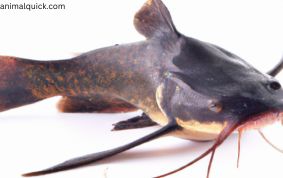Have you ever thought:
- Do Cory Catfish Produce a Lot of Waste?
- Are Cory catfish high maintenance?
- What is the best fish to keep your tank clean?
In short: Yes, cory catfish produce a moderate amount of waste.
While they are not excessive waste producers, regular water maintenance is still important to ensure a clean and healthy aquarium environment.
Do Cory Catfish Produce a Lot of Waste?
Yes, cory catfish are usually considered moderate waste producers compared to some other aquarium fish.
These small and peaceful bottom-dwelling fish are popular in freshwater tanks.
Despite producing waste like any fish, their small size and relatively low waste output make them suitable for various tank sizes.
Cory catfish are known for scavenging, helping keep the tank bottom clean by eating leftover food and debris.
However, the overall waste in your aquarium depends on factors like the number of fish, tank size, and filter efficiency.
Are Cory catfish high maintenance?
Cory catfish are low maintenance and are relatively easy to care for.
Here’s why:
- Hardiness: Cories are tough and can handle a variety of water conditions, adapting well as long as extremes are avoided.
- Peaceful Bottom-Dwellers: They peacefully coexist with most tank mates and stay at the bottom of the tank, avoiding conflicts with other fish.
- Dietary Versatility: Cories are not picky eaters. They will happily consume the most prepared sinking foods, supplements, and even algae tablets.
- Simple Tank Requirements: Basic filtration and oxygenation are usually sufficient for their needs. While they prefer sand substrate, gravel generally works too.
- Shoaling Nature: While they don’t need special tankmates, keeping cory catfish in groups of six or more is recommended as they are shoaling fish.
- Low Maintenance: Compared to larger or more delicate fish species, caring for cory catfish requires minimal time and effort. Their needs are easily met, making them suitable for beginners.
Do cory catfish help keep a tank clean?
Yes, cory catfish helps to keep the tank clean.
- Algae Eating: While not their primary food source, many cory species consume aquarium algae, assisting in keeping glass, decorations, and surfaces cleaner.
- Waste Processing: As bottom feeders, cories are adept at finding and ingesting fish, plant, or food waste that reaches the tank floor before it has a chance to rot.
- Low Bio-load: Cory produces very little waste themselves, contributing minimally to tank pollution. Their small bio-load is advantageous for maintaining water quality.
What is the Best Fish to Keep Your Tank Clean?
The best fish that keep your tank clean are Plecostomus, Siamese Algae Eater, Bristlenose Catfish, and Corydoras Catfish.
- Plecostomus: These bottom-feeding fish with sucker mouths are great at destroying algae on tank walls, decorations, and gravel. They also consume fish waste.
- Siamese Algae Eater: Known for scraping algae off surfaces with their sucking mouths, these fish are efficient algae eaters, including hair algae.
- Otocinclus Catfish: Small and peaceful, these catfish are avid consumers of common algae like brown diatoms. Their constant grazing helps maintain a visibly clean tank.
- Bristlenose Catfish: Another bottom-feeder that eats algae, uneaten fish food, and waste. Their sucking mouths contribute to cleaning ornaments, tank walls, and substrate.
What is the Easiest Fish to Keep Clean?
The easiest fish to keep clean are Guppies, Platies, and Betta Fish.
- Guppies: Small, colorful, and adaptable fish that can thrive in various conditions.
- Platies: Hardy livebearers with a variety of colors and patterns, suitable for different water conditions.
- Swordtails: Recognizable for the sword-like extension on their tails, these fish are hardy and easy to care for.
- Danios: Active and resilient, danios, including zebra danios, are known for tolerating different water conditions.
- Betta Fish: Colorful and hardy, bettas are suitable for smaller aquariums but should be kept alone or with peaceful tank mates.
- Corydoras Catfish: Low-maintenance bottom-dwelling fish with a peaceful and social nature, contributing to substrate cleaning.
What is the hardest fish to maintain?
The hardest fish to maintain are discus, arowana, stingrays, and saltwater species.
- Discus: These large, rapidly growing fish require exceptionally large tanks and intense filtration to handle their heavy waste output.
- Arowana: With their immense adult size, providing sized aquariums can be challenging. They also produce copious amounts of waste.
- Stingrays: Creating stingray-friendly conditions, including sandy floors and specific water chemistry, requires special effort and equipment.
- Saltwater Species: Many saltwater fish, such as tangs, triggers, and angels, are sensitive to fluctuations in water conditions commonly found in home tanks.
- Wild-caught fish: Those caught from natural habitats may adapt poorly to captive settings. They might refuse foods or grow stressed without ideal water parameters.
Which fish is least polluted?
The least polluted fishes are Mackerel, Sardines, Farmed Mussels, and Farmed Tilapia.
- Mackerel: Fast-reproducing small fish like mackerel tend to accumulate fewer pollutants, and they are a sustainable and nutrient-dense choice.
- Sardines: These tiny, oily fish feed low on the food chain, reducing the risk of contamination. Sardine fisheries also have a relatively low bycatch impact on other species.
- Farmed Mussels: Mussels feed by filtering water, avoiding the accumulation of heavy pollutants. Sustainably farmed mussels are a good choice for low contamination risk.
- Alaskan Salmon: Salmon from well-managed Alaskan fisheries spawn in clean waters, spending a short enough time at sea to limit contaminant uptake before harvest.
- Farmed Tilapia: Raised in closed pond systems, tilapia farming controls their diet, limiting exposure to pollutants common in wild fisheries.
Read More:
- Do Betta Fish Need a Heater?
- Are Catfish Bottom Feeders?
- Does Catfish Have Bones?
- Rohu Fish Benefits and Side Effects
- Why is Basa Fish Banned?

I love animals & want to know more about different creatures & sharing their stories with everyone. From my childhood, I’ve been exploring forests & watching animals in their homes.
Now, I write about my adventures & all the amazing things I learned. My blogs are easy to understand & make you want to know more about animals. I teach about why animals are important & why we should take care of them.

